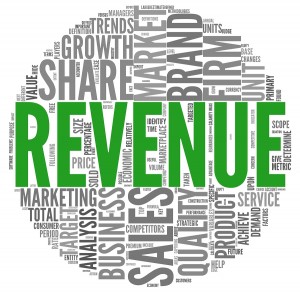With increased competition in the home health care industry and reductions in Medicare reimbursements, it is becoming imperative that home healthcare agencies adopt an efficient Revenue Cycle Management (RCM) system to be financially successful. RCM is a financial system that manages a company’s cash flow and has the ability, at any given time, to produce the company’s bottom line financial numbers.
In a home health agency, patients receive care under the direction of the central ‘hub’ of the agency. The central hub is the ‘back’ office handling claims, billing and care management. When this central hub does not function correctly, errors occur in claims and care management, such as CMS auditors inquiring about improper payments and clients leaving to a competitor due to lagging quality of care. One of the most effective ways to keep the central hub of a home health care agency running like a finely tuned machine involves by adopting software to handle RCM.
RCM involves all of the steps involved in managing claims processing, payment and revenue generation, including patient scheduling ad coding compliance. RCM software employs technology to track claims, patient care and revenue, determine patient insurance eligibility and properly coding claims using ICD-9 at every point throughout the care delivery process. In effect, RCM allows agencies to keep a finger on the pulse of their operation, enabling them to address potential risk areas and strategically plan according to revenue flows.
As home health care agencies grow, they face heavier workloads and tougher competition. This is why increasingly more agencies elect to adopt an RCM system as a way to reduce risk and enhance revenue generation. Home health care agencies considering adopting an RCM system should evaluate return on investment (ROI). In this instance, ROI represents the amount of financial return received after accounting for the cost of an RCM system.
Calculating the ROI from an RCM system is best understood by making two columns to compare costs and benefits. In the costs, column one can add the cost of adopting and maintaining the RCM system. In the benefits column, add excess staff time currently expended processing claims and managing care. With RCM, these costs are typically reduced by being able to monitor these areas in less time and with greater accuracy. Further, think of potential costs resulting from billing errors and potential audits. Lastly, think of the amount of increased revenue that can be gained from enhanced quality of care, accurate billing and directing staff time into revenue generating tasks rather than constantly remedying or trying to guess where the next problem will arise. The difference between these two columns represents the ROI.
Lost revenue can be the product of poor regulatory compliance and wasted resources. As workloads increase, these ‘revenue drains’ can creep into a home health care practice with little warning. Revenue drains ultimately cause an agency to lose clients and revenue, both of which can have a significant negative impact an agency’s bottom line. Exact figures concerning the potential ROI from an RCM for the home health care industry vary by practice. Therefore, it is difficult to determine an accurate figure whereby one can state with certainty RCM adoption could result in a ROI of X dollars. In the absence of robust data, it is useful to look at the agency’s present performance in the areas of revenue generation, operating costs and risk profile. Then think in terms of the value derived from monitoring financial activities and being able to prioritize the allocation of agency resources based on revenue projects. Additionally, RCM reduces risk of noncompliance, which can result in lost cash flow through additional time spent in reactionary mode and the potential of penalties and reputational damage.
RCM is becoming a necessity in the current regulatory and market conditions and could be the differentiating factor between agencies that merely survive and those that thrive.

